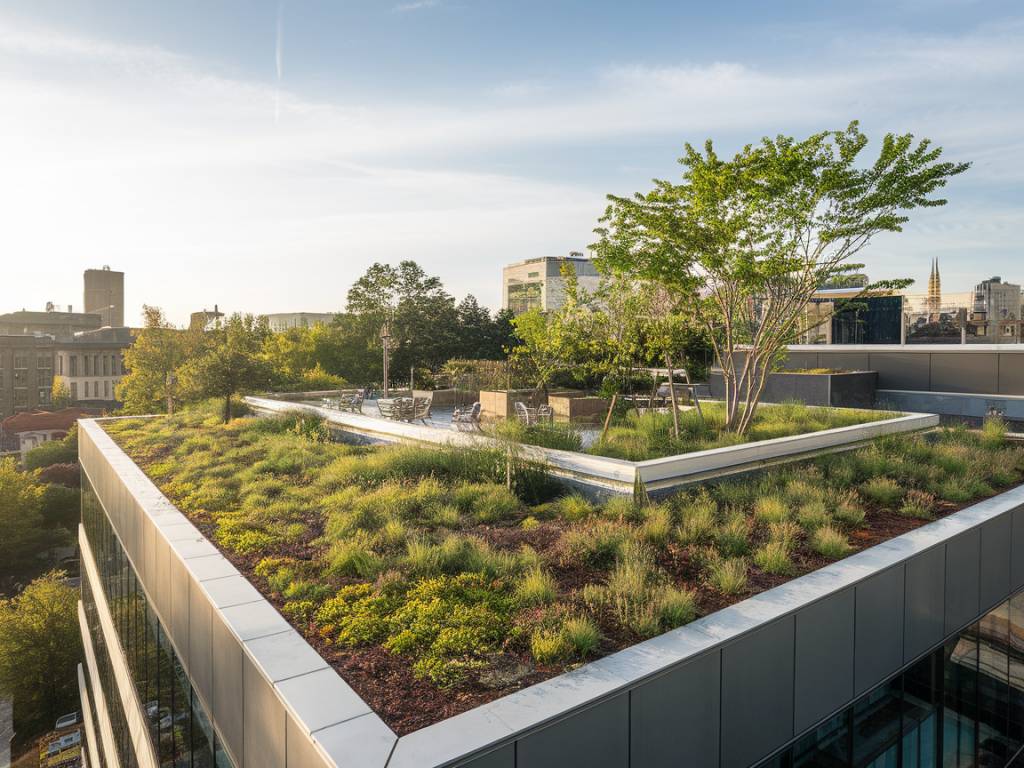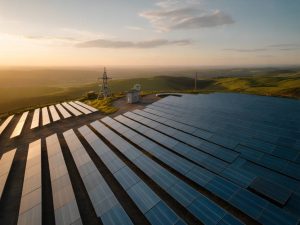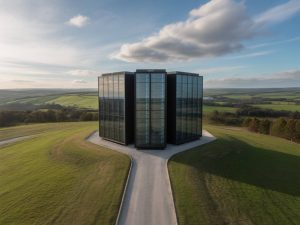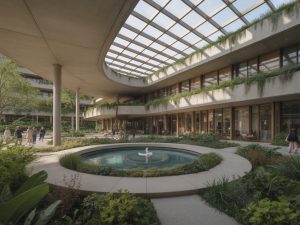Why Green Roofs Matter in Urban Areas
Imagine scaling a skyscraper in the heart of the city only to find a garden teeming with life on its roof. Sounds like a scene from a futuristic movie, doesn’t it? But it’s a reality today. Green roofs, also known as living roofs, are no longer just a trendy architectural feature; they’re a necessity for sustainable urban living.
As cities grow denser and environmental challenges mount, green roofs offer practical, science-backed solutions to transform our urban landscapes. But the question remains: how exactly do these lush rooftop ecosystems contribute to more sustainable cities?
What Are Green Roofs?
A green roof is essentially a layer of vegetation grown on top of a waterproofed roof structure. These roofs can range from simple setups featuring grass and wildflowers to more complex, curated gardens with shrubs, trees, and even food crops.
Green roofs are categorized into two types: extensive and intensive. Extensive green roofs are lightweight and low-maintenance, with shallow soil layers and hardy plants like succulents. Intensive green roofs are deeper and more complex, resembling full-fledged gardens that require more care but come with more biodiversity benefits.
But these aren’t just plants on a roof; they’re entire ecosystems working to bring balance to our urban habitats.
Environmental Benefits of Green Roofs
One of the most compelling reasons to invest in green roofs is their plethora of environmental benefits. Here’s how these rooftops are changing the game:
- Improved Air Quality: Plants on green roofs filter out airborne pollutants and dust, absorbing carbon dioxide while releasing oxygen. In dense cities struggling with poor air quality, every bit counts.
- Stormwater Management: Urban areas suffer from runoff issues due to impermeable surfaces. Green roofs act like a sponge, absorbing up to 70-90% of the rainfall they receive, thereby alleviating pressure on municipal drainage systems.
- Urban Heat Island Effect Reduction: By covering rooftops with vegetation, green roofs help cool city temperatures. Concrete jungles trap heat, but green roofs offer a natural way to regulate it.
In essence, these rooftops function as green lungs in the middle of bustling cities.
Energy Efficiency and Financial Savings
Green roofs aren’t just for tree-huggers and environmentalists—they make economic sense too. Buildings with green roofs experience better energy efficiency due to the insulation provided by the soil and vegetation layers. In the winter, they help retain warmth, and in the summer, they reduce indoor temperatures.
This means less reliance on heating and cooling systems, which translates to lower energy bills. Who wouldn’t want to save some extra cash while doing their part for the planet?
Biodiversity in Unexpected Places
It’s no secret that urbanization has been devastating for biodiversity. But green roofs offer a unique solution: pockets of ecosystems in places you’d least expect. Bees, butterflies, and birds can find refuge on these rooftops, helping to boost pollination and maintain ecological balance.
In cities where green spaces are scarce, green roofs become sanctuaries—not just for animals, but for humans seeking solace amidst nature.
Case Studies: Cities Leading the Way
Still wondering whether green roofs are worth the hype? Let’s take a glance at some real-world examples:
- Singapore: Known as the “Garden City,” Singapore has integrated green roofs into its urban framework extensively. Iconic buildings like Marina Bay Sands feature sprawling rooftop gardens. This initiative has reduced heat and improved urban aesthetics.
- Toronto: The city became a trailblazer with its Green Roof Bylaw, which mandates green roofs on new commercial, institutional, and residential developments. Since its launch in 2009, Toronto has seen air quality improvements and reduced stormwater issues.
- Berlin: With over 100 hectares of green roofs, Berlin is setting the standard for European cities. The city promotes green roofs both for their environmental impact and their contribution to public well-being.
These cities demonstrate that integrating green roofs isn’t just possible; it’s transformative.
Green Roofs and Human Well-being
We’ve talked about environmental and financial benefits, but let’s not forget the human element. After all, we’re the ones living in these cities. Green roofs offer a range of well-being perks:
- Mental Health Boost: Studies have shown that access to green spaces reduces stress, anxiety, and depression. A rooftop garden can offer a much-needed reprieve from the grind of urban life.
- Community Engagement: Shared green roof spaces can bring neighbors together, fostering a sense of community in otherwise isolating urban environments.
- Increased Property Value: Let’s face it—who wouldn’t want to live in a building with stunning rooftop greenery? Green roofs have been shown to increase property resale values.
It’s not just about sustainability; it’s about creating better, healthier lives for city dwellers.
Challenges and How to Overcome Them
While green roofs offer a plethora of benefits, they’re not without challenges. The initial cost of installation can be high, and not every roof structure is suitable for a green roof.
However, many cities and governments are stepping up, offering subsidies and tax incentives to encourage green roof adoption. Advances in material science and engineering are also making green roof systems lighter, more efficient, and easier to maintain.
The key? Collaboration between policymakers, architects, and communities to make green roofs a standard feature in urban design.
Could Green Roofs Be the Future of Urban Living?
As we face mounting urban challenges—from climate change to population growth—green roofs represent more than just an eco-friendly trend. They’re a testament to human ingenuity and our ability to coexist with nature, even in the most concrete of settings.
So next time you find yourself gazing at a monotonous city skyline, ask yourself this: What if every roof was a green roof? The answer might just lie in the sustainable cities of tomorrow.






More Stories
L’essor des communautés énergétiques locales : vers une nouvelle gouvernance citoyenne de l’énergie
Powering Data Centers Sustainably: The Role of Renewable Energy in the Digital Age
Integrating Biophilic Design with Green Technology: A New Paradigm for Sustainable Living